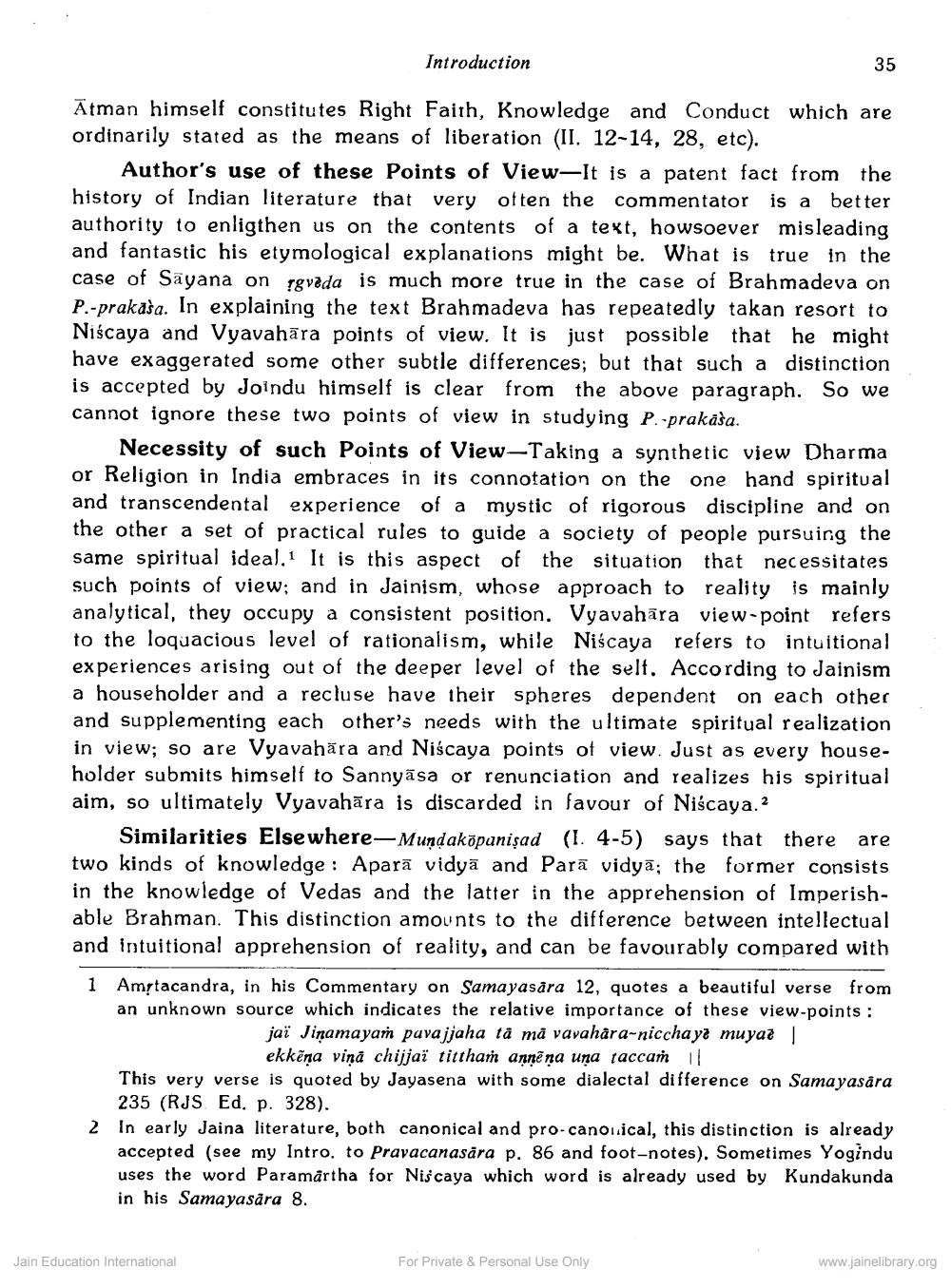________________
Introduction
35
Ātman himself constitutes Right Faith, Knowledge and Conduct which are ordinarily stated as the means of liberation (II. 12-14, 28, etc).
Author's use of these Points of View-It is a patent fact from the history of Indian literature that very often the commentator is a better authority to enligthen us on the contents of a text, howsoever misleading and fantastic his etymological explanations might be. What is true in the case of Sayana on rgvéda is much more true in the case of Brahmadeva on P.-prakaša. In explaining the text Brahmadeva has repeatedly takan resort to Niscaya and Vyavahāra points of view. It is just possible that he might have exaggerated some other subtle differences; but that such a distinction is accepted by Joindu himself is clear from the above paragraph. So we cannot ignore these two points of view in studying P.-prakaša.
Necessity of such Points of View-Taking a synthetic view Dharma or Religion in India embraces in its connotation on the one hand spiritual and transcendental experience of a mystic of rigorous discipline and on the other a set of practical rules to guide a society of people pursuing the same spiritual ideal.1 It is this aspect of the situation that necessitates such points of view; and in Jainism, whose approach to reality is mainly analytical, they occupy a consistent position. Vyavahāra view-point refers to the loquacious level of rationalism, while Niscaya refers to intuitional experiences arising out of the deeper level of the selt. According to Jainism a householder and a recluse have their spheres dependent on each other and supplementing each other's needs with the ultimate spiritual realization in view; so are Vyavahāra and Niscaya points of view. Just as every householder submits himself to Sannyāsa or renunciation and realizes his spiritual aim, so ultimately Vyavahāra is discarded in favour of Niscaya.2
Similarities Elsewhere-Mundaköpanişad (I. 4-5) says that there are two kinds of knowledge : Aparā vidyā and Parā vidyā; the former consists in the knowledge of Vedas and the latter in the apprehension of Imperishable Brahman. This distinction amounts to the difference between intellectual and intuitional apprehension of reality, and can be favourably compared with
1 Amptacandra, in his Commentary on Samayasara 12, quotes a beautiful verse from an unknown source which indicates the relative importance of these view points :
jaï Jinamayam pava jjaha tå må vavahāra-niccha ya muyaa
ekkēņa viņă chijjaï tittham annēna una taccam 11 This very verse is quoted by Jayasena with some dialectal difference on Samayasara 235 (RJS. Ed. p. 328). In early Jaina literature, both canonical and pro-canonical, this distinction is already accepted (see my Intro. to Pravacanasära p. 86 and foot-notes). Sometimes Yogindu uses the word Paramartha for Niscaya which word is already used by Kundakunda in his Samayasara 8.
Jain Education International
For Private & Personal Use Only
www.jainelibrary.org




